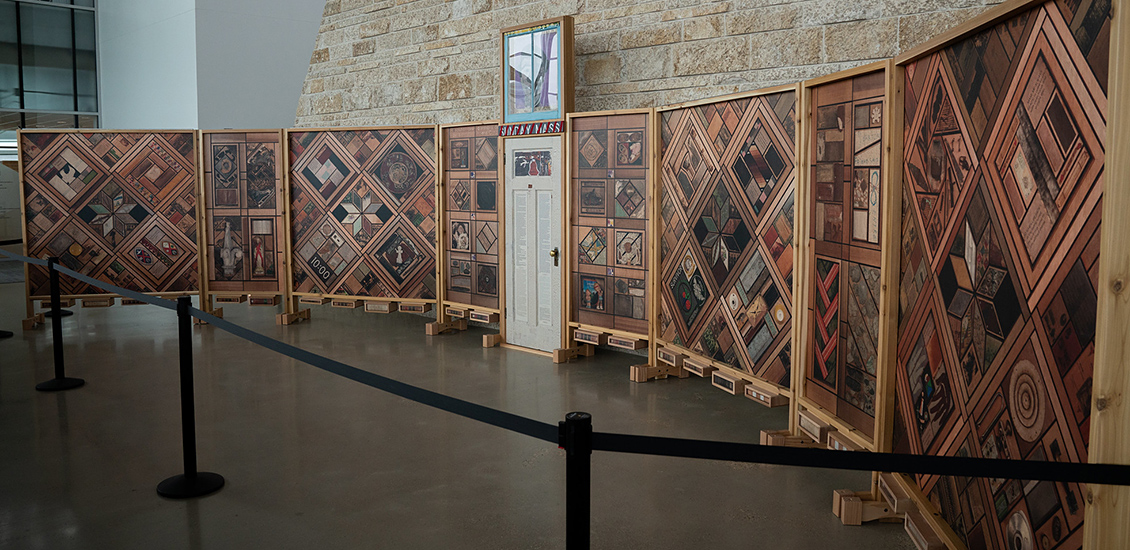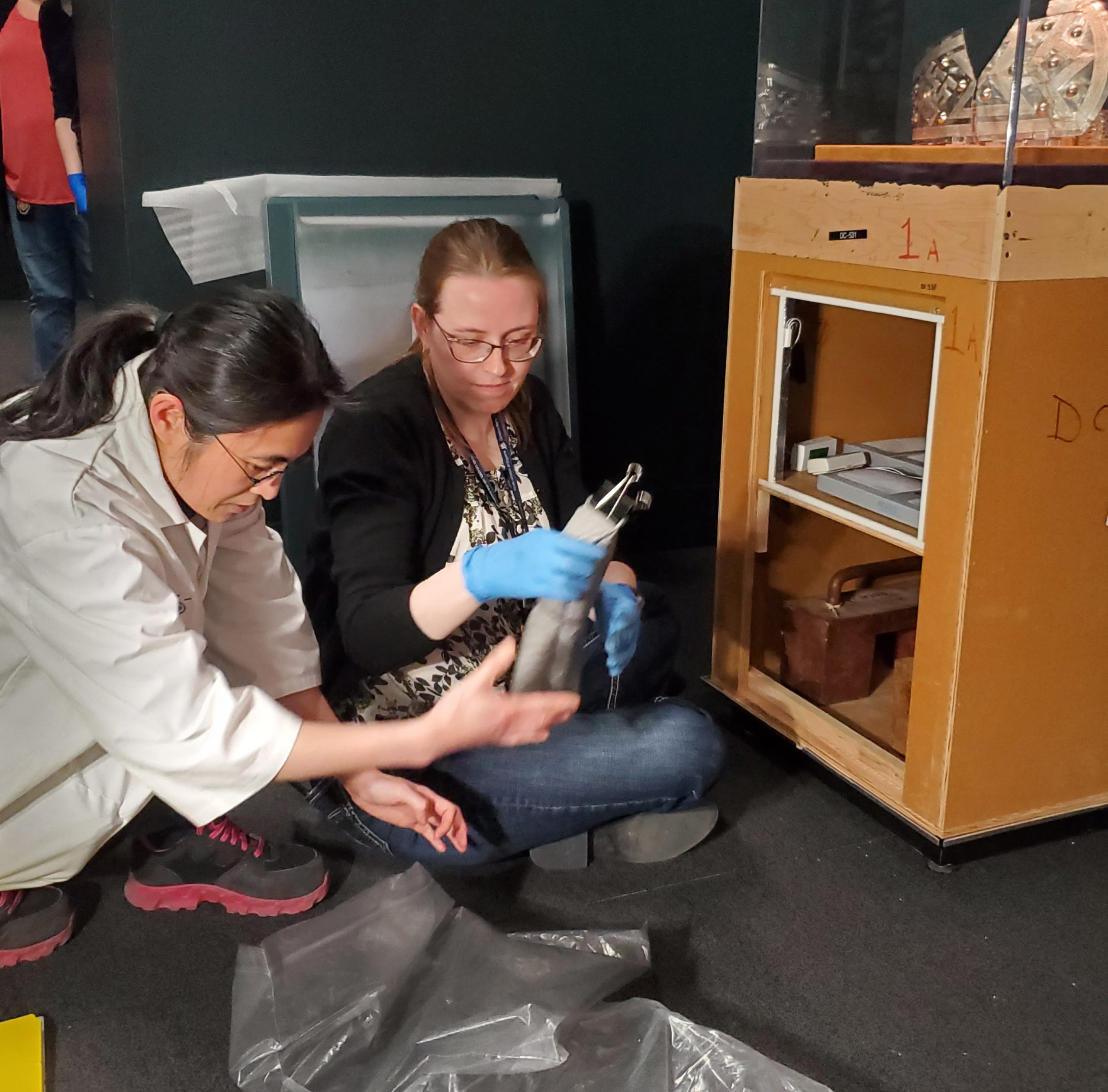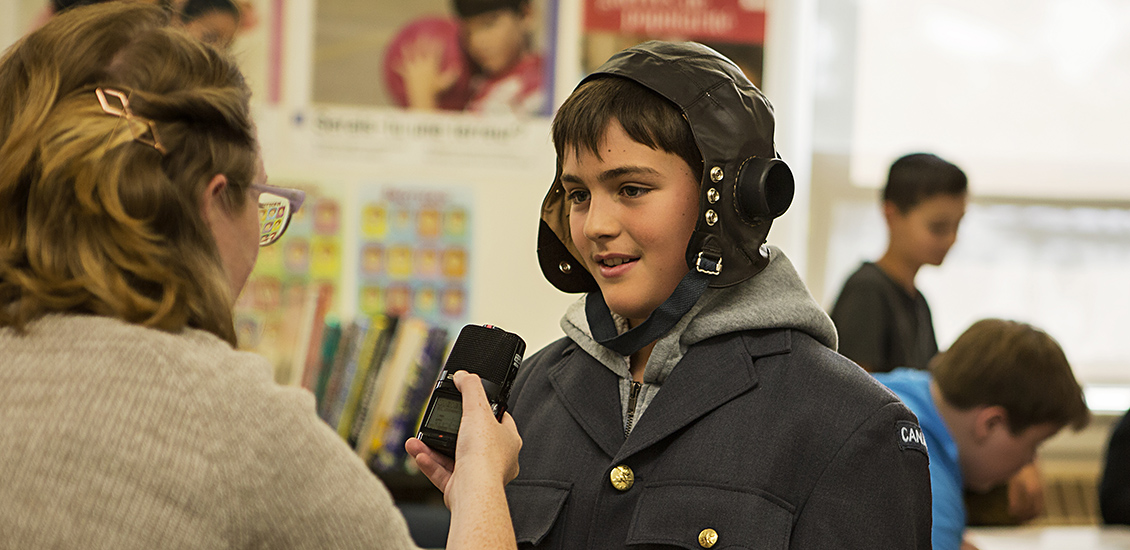As part of the Memory, Meaning-Making and Collections project, a partnership between the Native Canadian Centre of Toronto and the University of Toronto, nine aboriginal elders visited the Canadian Museum of History in late January.
The Memory, Meaning-Making and Collections project engages urban aboriginal seniors using objects from museum collections to ignite memories, create meaning and connect them with their cultures. The seniors are encouraged to share the life experiences and personal memories that certain artifacts may generate, so that these memories may be shared with others and form part of the larger collective memory.
“This visit was a culmination for the elders,” says project director Dr. Cara Krmpotich from the University of Toronto Museum Studies program. “They had been to see smaller collections at regional museums. Here they experienced a wide range of artifacts from their cultures, and shared memories and stories that those artifacts evoked. That’s what this project is about.”
During their visit, the elders met with Museum staff to view and discuss a selection of Cree and Ojibway materials in the collection and to learn about the ethnology, archaeology, collections care and conservation research associated with these artifacts.
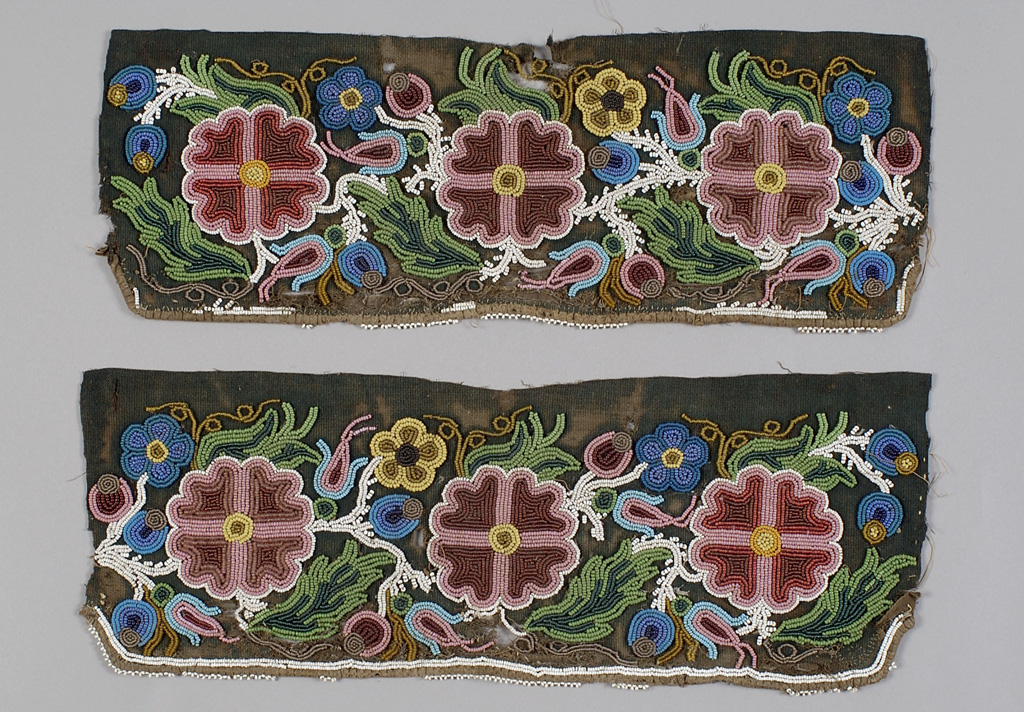
Pair of beaded panels, intended to be sewn onto leggings. Made from black broadcloth, heavily decorated with multi-coloured beadwork. Canadian Museum of History, III-G-864, 4241-2111-8839-003
Here’s a sample of what the elders had to say about their experience:
Evelyn Wolfe, Ojibway and Cree
“I went to a residential school and I never went back to the reserve. It wasn’t until I was fifty that I wanted to discover things about my culture. Now I’m learning so much, seeing things I haven’t seen before.”
Evelyn was born on the Brunswick House First Nation near Chapleau in Northern Ontario and has lived for many years in Toronto.
Orrice Coates, Chippewa
“I think this rice paddle is beautiful. On Georgina Island years and years ago, my grandfather could walk across Lake Simcoe and they harvested wild rice. But when they built the canals the lake level rose and the rice is gone now.”
Orrice Coates grew up in the Georgina Island Chippewa First Nation in Southern Ontario and now lives in Toronto.

Rice harvesting beater. This roughly made paddle would have been used for harvesting rice. Canadian Museum of History, III-G-371, 3191-211-0079-D2003-06748.
Ernie Sandy, Ojibway
“It’s interesting for me to see what is being shown here to represent my people. You see the ingenuity and practicality.”
For thirty years, Academic Elder Ernie Sandy has been learning and sharing the ceremonies, wisdom and knowledge of his people. He lives in Orillia, Ontario.
Susan Hunter, Washaho Cree First Nation
“A needle used for making fishing nets struck me most. I used to make nets with my grandmother and the needle brought back memories of her.”
Susan has lived in Toronto most of her life. She was born in Fort Severn First Nation on Hudson Bay, the most northern community in Ontario.
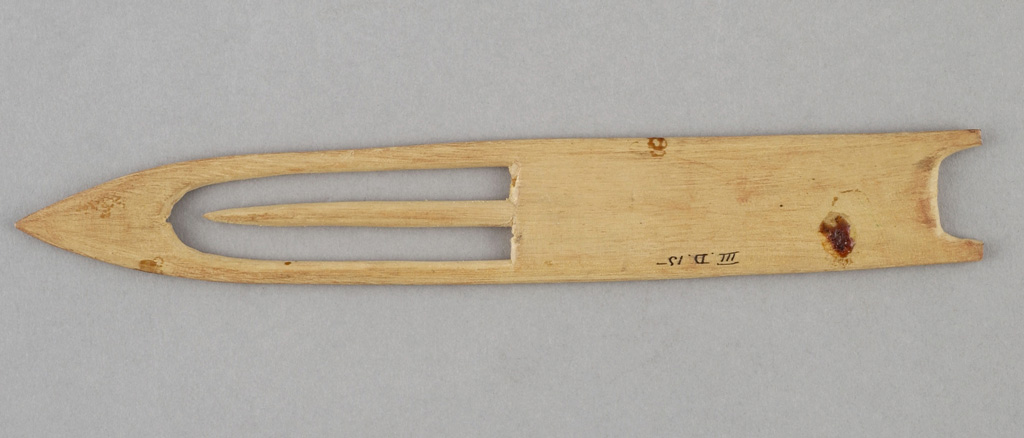
Fishing net needle made of wood. The netting twine would be wrapped around the body of the needle between the protrusions at the base, and around the wood prong in the centre. This needle was used in making sturgeon nets. Canadian Museum of History, III-D-15, 4207-2113-3762-D2004-21741.
Dan Smoke, Seneca, Six Nations Grand River
“I didn’t know that the Museum has clothes worn by my great-great-grandfather, John Arthur Gibson, Grand Chief of the Iroquois Confederacy at Grand River, and that they have a recording of John Arthur reciting my people’s creation story. I feel that I’m supposed to be here to help tell my great-great-grandfather’s story.”
Mary Lou Smoke, Anishinaabe Kwe (Ojibway) from Batchawana Bay
“I didn’t know my mother went to a residential school. We always went to church events like potlucks and once I asked her, ‘Mom, what did the Indian people do a hundred years ago?’ And she said, ‘I don’t know but one day you’ll find out.’ My whole life now is reviving and sharing the old ways.”
Dan and Mary Lou Smoke live in London, Ontario, where they host the radio show Smoke Signals and teach courses at Western University on indigenous spirituality and representation of First Nations in the media. They have been reviving, practicing and teaching traditional ways since the early 1970s.
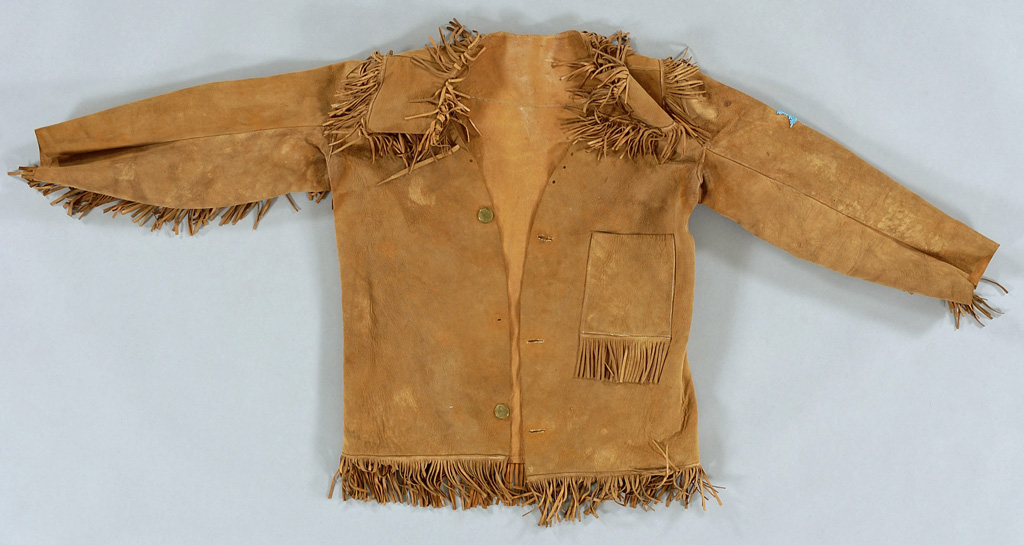
Coat-type shirt made from buckskin in European styling, which was once owned by John A. Gibson, Grand Chief of the Iroquois Confederacy at Grand River. Canadian Museum of History, III-I-327, 5139-2222-3983-D2005-21177
The elders’ visit to the Canadian Museum of History was made possible in part by a grant from CN Rail.

